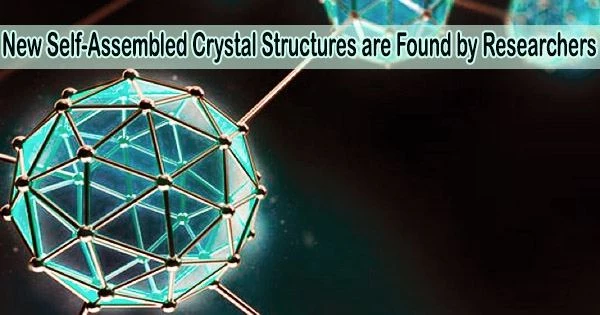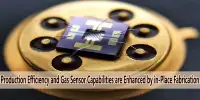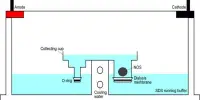More than 20 novel self-assembled crystal structures, none of which had ever been seen before, have been discovered by Cornell University researchers using a focused computational strategy.
Ph.D. student Hillary Pan and her advisor Julia Dshemuchadse, assistant professor of materials science and engineering, author the research, published in the journal ACS Nano under the title “Targeted Discovery of Low-Coordinated Crystal Structures via Tunable Particle Interactions.”
“Essentially we were trying to figure out what kinds of new crystal structure configurations we can self-assemble in simulation,” Pan said. “The most exciting thing was that we found new structures that weren’t previously listed in any crystal structure database; these particles are actually assembling into something that nobody had ever seen before.”
According to the report, the team searched specifically for low-coordinated assemblies over a broad parameter space covered by particles interacting via isotropic pair potentials.
“Low-coordinated structures have anisotropic local environments, meaning that the geometries are highly directional, so it’s incredible that we’re able to see such a variety of these types of structures using purely non-directional interactions,” said Pan.
This is the first time that we’re quantifying the relationship of this isotropic pair potential with the crystal structures that result. These new crystal structures can now serve as design targets for researchers who actually make nanoparticles and colloids.
Julia Dshemuchadse
Many technologically significant materials, including framework structures like metal-organic frameworks, clathrates, and zeolites as well as photonic crystals like diamond, have low particle coordination as a structural property that is essential to their functional capabilities.
The scientists created a brand-new functional form for particle interactions that allows for independent tuning of each aspect. The simulation allowed the researchers to methodically alter pairs of parameters, allowing them to manipulate different aspects of the particle’s interaction landscape.
The paper claims that despite restricting the search to a small region of the enormous parameter space of potential particle interactions, a wealth of complexity and symmetry is evident within these crystal structures, which include clathrates with empty cages and low-symmetry structures, which were also not previously seen in simulation.
The research contributes new theoretical frameworks for those working in the subject and shows how complex structures can arise from basic interactions. The flexible and intuitive interaction potential design created by the researchers is a crucial first step in identifying the features of particle interactions that result in particular structural traits, which will be helpful in developing synthetic rules to create target structures.
The team’s research indicates that regulated self-assembly may allow for an infinite number of novel and unusual material structures.
“This is the first time that we’re quantifying the relationship of this isotropic pair potential with the crystal structures that result,” Dshemuchadse said. “These new crystal structures can now serve as design targets for researchers who actually make nanoparticles and colloids.”
















